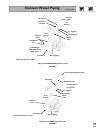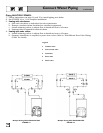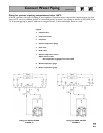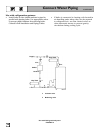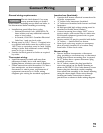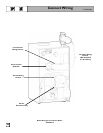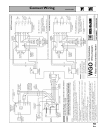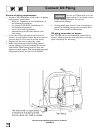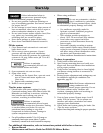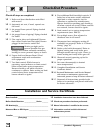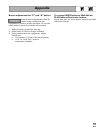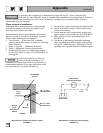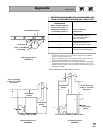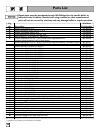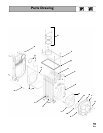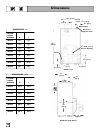
Follow information below to
prevent severe personal injury,
death or substantial property damage:
• Do not use gasoline crankcase drainings or
any oil containing gasoline. See burner manual
for proper fuel oil.
• Do not attempt to start burner when excess oil
has accumulated, when unit is full of vapor or
when combustion chamber is very hot.
• Do not start burner unless collector hood, flue
cap, jacket cap, breeching and burner
mounting door are secured in place.
• Never burn garbage or paper in the boiler.
• Never leave combustible material around it.
Fill the system:
1. Close manual and automatic air vents and
boiler drain cock.
2. Fill to correct system pressure. Correct
pressure will vary with each installation.
Normal cold water fill pressure for residential
systems is 12 psig. Boiler water pH 7.0 to 8.5
is recommended.
Failure to maintain
recommended pH level can
cause section failure and leaks.
3. Open automatic air vent one turn.
4. Open other vents.
a. Starting on the lowest floor, open air vents
one at a time until water squirts out.
Close vent.
b. Repeat with remaining vents.
5. Refill to correct pressure.
Tips for water systems:
• Check boiler and system piping for leaks.
Continual makeup water will reduce boiler life.
Minerals can build up in sections, reducing
heat transfer and causing cast iron to
overheat, resulting in section failure.
Failure to maintain
recommended pH and repair
leaks can cause section iron corrosion, leading
to section failure and leaks. Do not use
petroleum-based sealing or stop-leak
compounds in boiler systems. Damage to
system components can result.
• For pH conditions outside 7.0 to 8.5 range or
unusually hard water areas (above 7 grains
hardness), consult local water treatment company.
• When using antifreeze:
Do not use automotive, ethylene
glycol, undiluted or petroleum-
based antifreeze. Severe personal injury, death
or substantial property damage can result.
— Use antifreeze especially made for
hydronic systems. Inhibited propylene
glycol is recommended.
— 50% solution provides protection to
about -30°F. Do not exceed 50% mixture.
— Local codes may require back-flow
preventer or actual disconnect from city
water supply.
— Determine quantity according to system
water content. Boiler water content is listed
on back cover of manual. Percent of solution
will affect sizing of heat distribution units,
circulator and expansion tank.
— Follow antifreeze manufacturer’s instructions.
To place in operation:
1. Verify boiler is filled with water.
2. Open burner mounting door and verify rear
target wall, floor and burner door insulations
are in proper position.
3. Verify burner mounting door is closed tightly
and burner wiring harness is connected to
junction box.
4. Factory burner adjustment and settings may not
be suitable for specific job conditions. See
Appendix, page 25.
Make final burner adjustments
using combustion test
equipment to assure proper operation. Do not
fire boiler without water. Sections will
overheat, damaging boiler and resulting in
substantial property damage.
5. Vent air from system. Repeat steps 4 and 5
under “Fill the system.” Air in system can
interfere with water circulation and cause
improper heat distribution.
6. Check boiler and system piping for leaks. See
“Tips for water systems.”
7. Inspect breeching and venting for proper operation.
23
Start-Up
For additional information, refer to instructions packed with boiler or burner:
• Burner Manual
•
Maintenance and Service Guide for GOLD Oil Water Boilers



